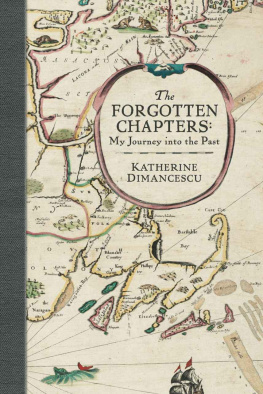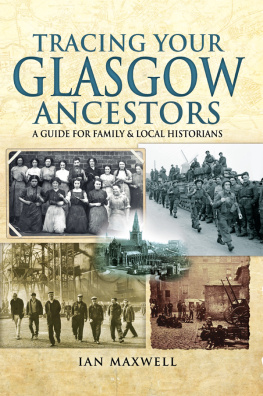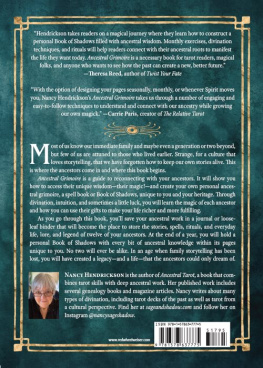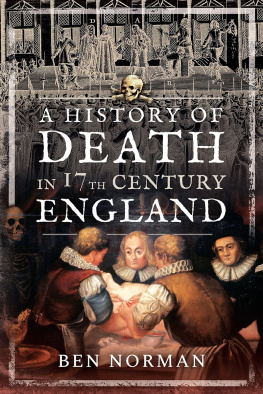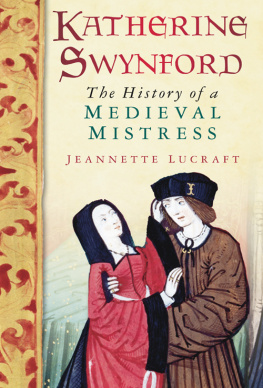
The Forgotten Chapters My Journey into the Past Katherine Dimancescu First Edition 2013 Copyright 2013 by Katherine DimancescuAll rights reserved.No part of this publication may be reproduced or transmitted in any form without the express permission of the author.978-0-9896169-9-7Designed by Trish LaPointe, tslapointedesign.comSet in Centaur type by Trish LaPointe.Printed in the United States of America.The cover image is A Mapp of New England (circa 1675) by John Seller. Map reproduction courtesy of the Norman B. Leventhal Map Center at the Boston Public Library, Boston, Massachusetts. This book is dedicated to my brother Nick (1985-2011) A True Knight of the Sky Discovering Denisons

Authors Photo: Granite monument erected in memory of Captain George Denison and his second wife, Ann (Borodell) Denison. Anns small headstone is to the right of the monument. Ann passed away at the age of 97 on September 26, 1712. Elm Grove Cemetery, Mystic, Connecticut. In American history classes, I read chronicles of incredible individuals who possessed courage, passion, and visions that shaped the United States. Researching my ancestors who emigrated to America between 1620 and 1805 provided insights into the settlement of New England. Prominent ancestors who surfaced from the pages of history books included William and Mary Dyer, John and Priscilla Alden, Captain John Underhill, Captain George Denison, and Reverend Thomas Shepard. My recognition of my ancestors prompted me to share their stories that offer a personalized lens through which to take in our nations history.An eighth-grade family history research project initially inspired a passion for genealogy and the search for maternal ancestors. There were few forgotten chapters on my fathers side of the family. His family roots in Romania going back to the late fifteen hundreds had been documented. His family had been prominent landowners, who owned property in Wallachia for centuries. My grandfather, D. D. Dimancescu, was a Romanian diplomat who fought in World War I on the side of the Allies. His diplomatic postings included San Francisco and later, England where he lived with his family during World War II. After the war ended, he attended the Paris Peace Conference in 1946. Less was known about my maternal ancestors. At first, mapping out my mothers family tree was a challenge. My curiosity was piqued by a family lineage establishing connections to Connecticut in the sixteen hundreds. This book is the story of what unfolded when I set out in search of my American ancestry. Piecing together the forgotten chapters of my family narrative was an experience that spanned nearly twenty years with primary research in both America and England.Long after I finished my eighth-grade family history project, I continued to research my ancestors. My family roots unexpectedly became part of the discussion when I applied to college. In high school at my first meeting with the college counselor, I happily announced that I planned to apply for early decision to Bowdoin College in Maine. I had toured the school over the summer, spoken to alumni, and looked at courses and programs; I thought that Bowdoin was a perfect fit for me. There were, of course, practical considerations about attending a college in Maine: long dark icy New England winters and mud season (Maines alternative version of spring). After hearing me express my enthusiasm for Bowdoin, the college counselor said in a calm tone, gleaned after years of advising students, Well, if that is what you have decided, I am here to help you. I think it will be wise for you to also meet with representatives from other small liberal arts colleges.I met with admissions officers, many of them representing colleges in the Midwest. In early December 1998, an admissions officer came from Denison University. To make this meeting on time, I left an honors history class early, and as I stepped outdoors onto the campus quad, the chilly dark afternoon reflected my mood. I did not want to hear about a college in Ohio because I had my mind set on attending a college on the East Coast.As I climbed the stairs to the college office, I paused, struck by thoughts that Ohio had tornadoes, corn fields, and no ocean breezes, and it was very far away from home. During our meeting, the admissions officer talked about Denison Universitys history program and the town of Granville, which was settled by people from Massachusetts in the early eighteen hundreds. He said the town had an East Coast look with a touch of midwestern friendliness.A few days later, a thin envelope arrived from Bowdoin College delivering unwelcome news. I had not been accepted for early decision. Now the waiting game began to see if I was accepted in the spring. In what I silently labeled as a where-is-my-future-college-plan-headed meeting with my patient college counselor, I sat there listlessly, my face red and puffy from crying. He said, At this point, it makes sense for you to apply to other colleges. The college counselor from Denison University said he would welcome your application. Another option could be Transylvania University in Kentucky. As I recall, your fathers family is from Romania, specifically Transylvania, isnt it? Of course, you would be studying in Kentucky, not eastern Europe. With your last name and heritage, you could bring a lot to the college.When college acceptance letters arrived in the mail, I was in the Australian rainforest on a school trip. This was an unlikely place to hear college acceptance news. When I located a pay phone and called home, my mother said quickly and happily on the other end, Your first acceptance letter is here. Its from Denison University in Ohio. There was more good news. Denison was offering me a scholarship! I thought I could hear champagne corks popping at home as my parents celebrated this great news. Weeks later, a letter arrived from Bowdoin which stated I had not been accepted. Naturally, Denison became a top choice. Touring the campus in early May with trees in bloom, I fell in love with Denison University and decided to attend. I had no idea that I was about to become a Denison who attended Denison University.When Denison University was first mentioned, I recalled the name Denison from my eighth-grade family history project. I discovered I had an ancestor named Captain George Denison, who lived in seventeeth-century Mystic, Connecticut. Ancestral connections between Captain George and William S. Denison, who was the benefactor of the university, did not cross my mind in eighth grade. Years later, I discovered William was a fellow descendant of Captain George.In the years after I graduated from college, more Denison family connections came to light. I found ancient cemeteries where Denisons were laid to rest, family stories full of valor, warfare, love, and historic houses. I learned that George emigrated from Bishops Stortford, England, with his parents, William and Margaret (Chandler) Denison, and two of his brothers, Daniel and Edward. They arrived in New England in November 1631 onboard the Lyon with Reverend John Eliot, who tutored George during the voyage from England. George and his family settled in Roxbury, Massachusetts. Reverend Eliot also settled in Roxbury, and a year later he started preaching in the newly established First Church in Roxbury. William became the third member and his wife, Margaret, the thirty-third member of this church.The year 1632 was important for William and his family. His church membership paved the way for him to achieve the status of freeman on July 3, 16321. Being a freeman in the Massachusetts Bay Colony was significant because it gave one the right to vote for colony officers. In some colonies, though, freemanship was tied to church membership, and so the meaning was somewhat different. Massachusetts Bay and New Haven, the most Puritan of Puritan colonies, made church membership a prerequisite for freemanship, while the rest of the New England colonies did not.2 On October 18, 1632, Williams son, Daniel, married Patience Dudley, whose father, Thomas Dudley, became Governor of the Massachusetts Bay Colony. Patiences sister Anne (Dudley) Bradstreet is considered by many to be the first American poet.3By 1642, William was ranked as one of the five wealthiest men in Roxbury, as he had a personal estate of 24 7s. and real estate of seven acres valued at 6 8s.4 He and Margaret celebrated the marriage of their son George and his first wife, Bridget Thompson, in March 1640, and then the marriage of their son Edward and his wife, Elizabeth Weld, the following year on March 30, 1641. The newlyweds all stayed in Roxbury, unlike Daniel and Patience who moved to Ipswich, Massachusetts, a few years after their marriage.I discovered there are Denison cousins alive today around the world. Some Denison cousins use an alternate spelling of the name, Dennison, instead of Denison. One historic location, in particular, the Denison Homestead, links cousins who are descendants of Captain George Denison. It is a place that many of the family have found while researching our Denison roots in Mystic, Connecticut. We have stepped over its historic threshold to discover the homestead, built in 1717 by Captain George Denison who was named in honor of his paternal grandfather, Captain George.Beholding the Denison Homestead for the first time made for a breathtaking sight. The homestead, the antique barn across the street, and the rolling meadow were a classic New England scene conjuring up the past. The meadow below the homestead was once a training ground for Captain George and his fellow soldiers as they prepared to fight during King Philips War (16751676). The Denison Homestead, also known as Pequotsepos Manor, is now a house museum open to the public. Touring its rooms offered perspectives into Denison family history during different eras of Americas history. The homestead sits in the midst of 160 acres, which were originally owned by Captain George, who settled here in 1654. There has been a Denison presence in this location for over 350 years. If Captain George returned to his former haunts, he would be pleased with how the Denison legacy has endured. Now the homestead is creating new opportunities to educate both Denison descendants and the public about colonial New England history by hosting historic reenactments, lectures, and other community events.
Next page
